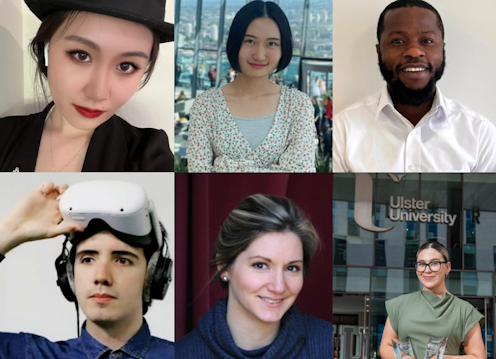Source: The Conversation – UK – By Umair Choksy, Senior Lecturer in Management, University of Stirling

The US has imposed a 50% tariff on most Indian exports, following through on its threat to raise them from 25%. Although they are formally applied to goods, there are fears that tariffs could also unleash a domino effect on IT services. As strange as it may sound, the tariff wars sparked by the US’s “liberation day” levies could now filter through to things like apps and online shopping.
India is home to software service providers – companies that deliver and maintain apps for clients all over the world. Already, there have been reports that major Indian providers such as TCS and Wipro are seeing project delays as US clients adopt a “wait-and-watch” stance.
The Trump administration’s recent announcement that it will impose a US$100,000 (£74,072) fee for new H-1B skilled worker visas, which is popular with Indian IT professionals, has added further uncertainty.
While US tariffs don’t hit software services directly, they can create what are known as “second-order effects”. In other words, as companies in industries affected by tariffs (like retail and manufacturing) start to feel the extra costs, they slash discretionary IT spending.
This leaves less in their budgets for outsourcing contracts. My research on other types of shock in countries that provide IT services has shown similar pressures arising.
This all matters because consumers – the end-users of banking apps, hospital portals, online shopping platforms and delivery systems – rely on Indian software providers far more than they may realise. Nearly 60% of the world’s leading companies outsource their IT projects to India, and the country maintains much of the digital infrastructure behind all these systems.
An Indian team might be running the back-end of a US hospital’s patient management system, for example. When tariffs raise hardware costs in the US, the hospital may delay adding new features like online appointment booking.
The cost of tariffs in the US will inevitably squeeze budgets, potentially making organisations pause, downsize or cancel IT projects. For consumers, including those outside the US, this can translate into slower upgrades, glitches and longer waits for appointments that are managed on online platforms.

Tero Vesalainen/Shutterstock
If tariffs squeeze client budgets and delay IT contracts, shoppers in Europe or Asia could face glitches, slower updates or disrupted payments. A global outage in 2024 caused by a faulty update from US cybersecurity firm CrowdStrike grounded flights and disrupted retailers worldwide. It shows how quickly US digital shocks can cascade to consumers everywhere.
And a study found that some US and UK client firms ended IT projects when political unrest in Pakistan made delivery less predictable. One US client, for example, froze software development, leaving the outsourced team half-way through a system upgrade. This meant end-users never saw the new feature arrive and Pakistani software firms lost their largest US-based client.
Other research has found that a spike in terror attacks in Pakistan from 2008 to 2009 led to a delay in critical information reaching IT teams there who were working on software. This caused bugs to linger and left end-users stuck with faulty or outdated apps.
Keeping services running
When they’re squeezed, outsourcing firms protect the software end-users by reshaping how projects are managed rather than relying on price-cutting or goodwill. My recent study, undertaken with colleagues, found that resilient firms adapt on the fly, shifting work to backup offices or networks when disruptions hit, so people can still access systems, even during blackouts.
If US tariffs squeeze client budgets and similarly disrupt the pipeline of projects, outsourcing firms may respond in the same way. That could mean reallocating tasks, altering delivery timescales or opening offices locally – to shield end-users from service interruptions.
Other research shows that suppliers change processes mid-project when rules or client needs suddenly shift. To handle complex tasks like an orthodontist’s 3D app, for example, a firm might decide to split the work. This could mean sending small teams abroad or opening offices near US or UK clients for sensitive tasks, while keeping most coding offshore.
We, as end-users of software apps, are not just passive recipients. Our research on software firms showed that when everyday users demanded apps that looked good and worked without glitches, companies passed that pressure straight to their outsourcing partners in countries like India and Pakistan. In effect, consumer expectations filtered upwards.
In the end, tariffs are not just abstract trade measures. They work their way through client budgets and outsourcing contracts, potentially shaping how quickly apps are updated or how smoothly systems run. For end-users, that can translate into delays to new features, glitches or systems that freeze just when you need them most.
![]()
Umair Choksy does not work for, consult, own shares in or receive funding from any company or organisation that would benefit from this article, and has disclosed no relevant affiliations beyond their academic appointment.
– ref. Why Trump’s tariffs could make the apps on your phone worse – https://theconversation.com/why-trumps-tariffs-could-make-the-apps-on-your-phone-worse-264173









